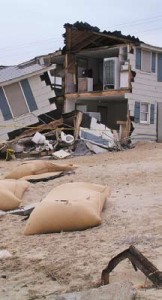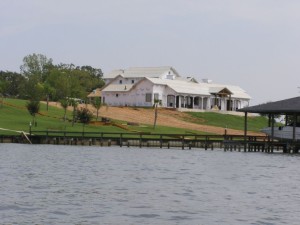According to Platt, prior to the great Mississippi flood of 1927, preparation for and recovery from floods and other natural hazards was primarily a state and local issue. After this epochal flood, the federal government began to take a much larger role. Rather than taking a lead in risk avoidance, however, the federal role became one of risk reduction and risk sharing. This shift had a profound effect on how development occurred in hazardous coastal areas. The government was now seen as a “fixer” and a protector. It was thought that hazards could be reduced, if not eliminated, through engineering, and the government was there to bail out citizens and businesses when there were failures. This policy shift essentially facilitated the development of many thousands of acres of hazardous property that likely would not have been developed if left to market forces alone.
Land Use
There is no federal land use law. Federal laws that directly impact adaptation to climate change deal mainly with mitigation and response to disasters.
This patchwork of federal programs, some limiting development in hazardous zones (e.g., CoBRA), but most facilitating it (e.g., the NFIP), does not promote an “overarching federal policy [that] governs land use and development in hazard prone areas”. Such an overarching policy is needed to address climate change issues, and more importantly, to provide critical federal leadership
Building Codes
 There is no federally-enforced building code nor is any federal agency charged with administering building codes at the national level. Instead, building code recommendations and standards are derived from the International Code Council (ICC) or The Institute of Business and Home Safety (IBHS). These standards may be adopted in part or in toto by state or local governments, a measure not required by the Federal government.
There is no federally-enforced building code nor is any federal agency charged with administering building codes at the national level. Instead, building code recommendations and standards are derived from the International Code Council (ICC) or The Institute of Business and Home Safety (IBHS). These standards may be adopted in part or in toto by state or local governments, a measure not required by the Federal government.
Strong Federal leadership is needed in hazard mitigation planning to encourage and implement changes in policy so that buildings and developments are designed according to the type and degree of hazard. Policy should be based on the latest version of model building codes, developed though disaster safety research.
Learn more about the organizations guiding disaster safety building codes and what they recommend…
Summary on the Federal Framework
This is a review of the principal federal laws above that impact coastal management, and that could have a direct impact on the development of policy for adapting to change in the coastal zone. This patchwork of federal programs, some limiting development in hazardous zones (e.g., CoBRA), but most facilitating it (e.g., the NFIP), does not promote an “overarching federal policy [that] governs land use and development in hazard prone areas”. Such an overarching policy is needed to address climate change issues, and more importantly, to provide critical federal leadership.




